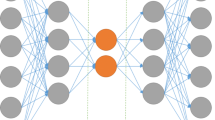Abstract
Deep Learning (DL) has enabled the development of accurate computational models to evaluate and monitor the neurological state of different disorders including Parkinson’s Disease (PD). Although researchers have used different DL architectures including Convolutional Neural Networks (CNN), Recurrent Neural Networks (RNN) with Long Short-Term Memory (LSTM) units, fully connected networks, combinations of them, and others, but few works have correctly analyzed and optimized the input size of the network and how the network processes the information. This study proposes the classification of patients suffering from PD vs. healthy subjects using a 1D CNN followed by an LSTM. We show how the network behaves when its input and the kernel size in different layers are modified. In addition, we evaluate how the network discriminates between PD patients and healthy controls based on several speech tasks. The fusion of tasks yielded the best results in the classification experiments and showed promising results when classifying patients in different stages of the disease, which suggests the introduced approach is suitable to monitor the disease progression.
Access this chapter
Tax calculation will be finalised at checkout
Purchases are for personal use only
Similar content being viewed by others
References
Arias-Vergara, T., et al.: Automatic detection of voice onset time in voiceless plosives using gated recurrent units. Digit. Signal Process. 104, 102779 (2020)
Caliskan, A., et al.: Diagnosis of the Parkinson disease by using deep neural network classifier. IU J. Electr. Electron. Eng. 17(2), 3311–3318 (2017)
El Maachi, I., Bilodeau, G.A., Bouachir, W.: Deep 1d-convnet for accurate Parkinson disease detection and severity prediction from gait. Expert Syst. Appl. 143, 113075 (2020)
Enderby, P.: Frenchay dysarthria assessment. Br. J. Disord. Commun. 15(3), 165–173 (1980)
Goetz, C.G., et al.: Movement disorder society-sponsored revision of the unified Parkinson’s disease rating scale (MDS-UPDRS): scale presentation and clinimetric testing results. Mov. Disord. 23(15), 2129–2170 (2008)
Jankovic, J.: Parkinson’s disease: clinical features and diagnosis. J. Neurol. Neurosurg. Psychiatry 79(4), 368–376 (2008)
Kim, H., et al.: Convolutional neural network classifies pathological voice change in laryngeal cancer with high accuracy. J. Clin. Med. 9(11), 3415 (2020)
Mallela, J., et al.: Voice based classification of patients with amyotrophic lateral sclerosis, Parkinson’s disease and healthy controls with CNN-LSTM using transfer learning. In: Proceedings of ICASSP, pp. 6784–6788. IEEE (2020)
McKinlay, A., et al.: A profile of neuropsychiatric problems and their relationship to quality of life for Parkinson’s disease patients without dementia. Parkinsonism Relat. Disord. 14(1), 37–42 (2008)
Orozco-Arroyave, J.R., et al.: New Spanish speech corpus database for the analysis of people suffering from Parkinson’s disease. In: Proceedings of LREC, pp. 342–347 (2014)
Orozco-Arroyave, J.R., et al.: Apkinson: the smartphone application for telemonitoring Parkinson’s patients through speech, gait and hands movement. Neurodegener. Dis. Manag. 10(3), 137–157 (2020)
Pinto, S., et al.: Treatments for dysarthria in Parkinson’s disease. Lancet Neurol. 3(9), 547–556 (2004)
Rizvi, D.R., et al.: An LSTM based deep learning model for voice-based detection of Parkinson’s disease. Int. J. Adv. Sci. Technol. 29(8) (2020)
Spencer, K.A., Rogers, M.A.: Speech motor programming in hypokinetic and ataxic dysarthria. Brain Lang. 94(3), 347–366 (2005)
Trinh, N.H., O’Brien, D.: Pathological speech classification using a convolutional neural network (2019)
Vásquez-Correa, J.C., et al.: Towards an automatic evaluation of the dysarthria level of patients with Parkinson’s disease. J. Commun. Disord. 76, 21–36 (2018)
Vavrek, L., et al.: Deep convolutional neural network for detection of pathological speech. In: Proceedings of the SAMI, pp. 000245–000250. IEEE (2021)
Wodzinski, M., et al.: Deep learning approach to Parkinson’s disease detection using voice recordings and convolutional neural network dedicated to image classification. In: Proceedings of the EMBC, pp. 717–720. IEEE (2019)
Acknowledgements
This work was financed by CODI from University of Antioquia grant # 2017-15530. This project received funding from the European Unions Horizon 2020 research and innovation programme under the Marie Sklodowska-Curie Grant Agreement # 766287.
Author information
Authors and Affiliations
Corresponding author
Editor information
Editors and Affiliations
Rights and permissions
Copyright information
© 2022 Springer Nature Switzerland AG
About this paper
Cite this paper
Rios-Urrego, C.D., Moreno-Acevedo, S.A., Nöth, E., Orozco-Arroyave, J.R. (2022). End-to-End Parkinson’s Disease Detection Using a Deep Convolutional Recurrent Network. In: Sojka, P., Horák, A., Kopeček, I., Pala, K. (eds) Text, Speech, and Dialogue. TSD 2022. Lecture Notes in Computer Science(), vol 13502. Springer, Cham. https://doi.org/10.1007/978-3-031-16270-1_27
Download citation
DOI: https://doi.org/10.1007/978-3-031-16270-1_27
Published:
Publisher Name: Springer, Cham
Print ISBN: 978-3-031-16269-5
Online ISBN: 978-3-031-16270-1
eBook Packages: Computer ScienceComputer Science (R0)




